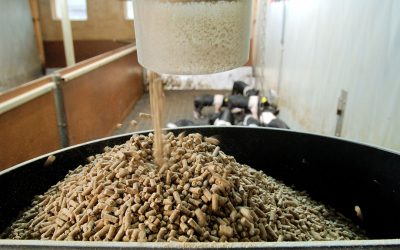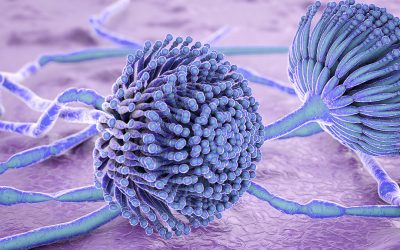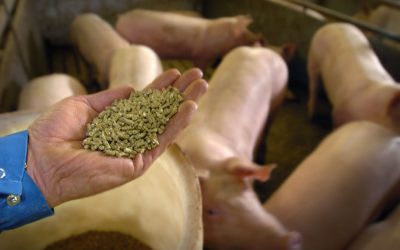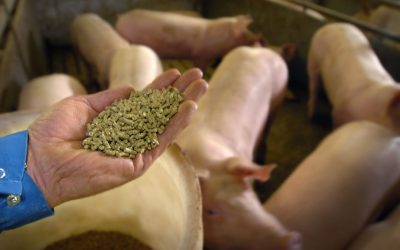Contaminants and Residues of Feed and Food of Animal Origin
Expert meeting of Akademie Fresenius discusses research findings and recommended procedures in Cologne, Germany.
The number of diseases traced back to contaminated food rises constantly.
In the past mainly acquired while travelling to exotic countries, dangerous
germs can now be found everywhere – even in the supermarket around the corner.
Whether dioxin, pesticides or EHEC: there are many vectors that can trigger health problems. Many of them reach the food chain via feed and travel, proceeding through to meat, milk or eggs into the human organism. Experts from all over Europe discussed new findings, prevention methods and successful crisis management in the area on the International Fresenius-Conference "Contaminants and Residues of Feed and Food of Animal Origin" on 21st and 22nd of November 2011 in Cologne, Germany.
Due to the circumstances of modern industrial production, a complete elimination of carry-over of critical additives into non-target feed would be impossible, Dr. Klaus-Dietrich Neumann (International Research Institute for Feed Technology – IFF) explained. Luckily, there are many measures that could minimise the effect. Essential characteristics of the feed production are a multitude of different mixtures and frequent changes of the formulations, which promote a non-intended carry-over of additives into other products. Examples of this phenomenon could be for example the dust residue from flotable particles, or dust adhesion on surfaces and crust formation due to unfavourable addition of liquids. A reduction of the carry-over could be accomplished through various routes, Neumann underlined. Amongst others, the direct addition of additives and premixes could help to reduce the problem. Besides that, outsized conveying and storage systems should be avoided as well the underfilling of mixers, vessels and hoppers. Other actions such as the elimination of deposits and crusts in regular intervals and the complete discharging of supply bins, hoppers, coolers and weighers after changing feed compositions, could also have a great impact, Neumann told the audience.
Heavy metals – often included in animal feed
Discussions about contaminated food and feed often contain heavy metals. These are whether of natural origin (e.g. volcanic activity, in rocks and minerals) or caused by human activity, Jens J. Sloth (National Food Institute – DTU Food, Denmark) argued. Among other things, agricultural methods such as the use of fertilisers and pesticides, industrial disposals or mining work is supposed to be the main responsible for the release of toxic heavy metals. According to the WHO, "toxic heavy metals" describes the metals lead, mercury, cadmium and arsenic, all included on the top-10 list of chemicals of public concern. These metals are considered to be "undesirable substances" in feedstuff and their presence in feed has recently been evaluated by the European Food Safety Authority (EFSA) and their maximum levels of concentration are regulated in the EU directive 2002/32/EC. Every mentioned metal can usually be traced back to a few main sources: high concentrations of cadmium can be found in soils, forage crops and fertilisers, arsenic reaches plants and animals primarily through the release from volcanic activities and weathering of minerals as well as the use of arsenic containing pesticides. But not just domestic animals suffer from a contamination of feed: aquacultures can also be exposed, e.g. fishmeal, which is used to feed farmed fish, may be a source of mercury. Sloth pointed out, that the EFSA is notably concerned about the exposure of cadmium and arsenic and wishes for a reduction of both metals within the food chain. On the other hand, lead exposure seems low by comparison – caution should nevertheless be necessary given the presence of risk groups such as children and pregnant women.
Importance of prevention and professional crisis management rising
In regions with a high density of animals and production facilities, a food crisis would have nearly unpredictable consequences, Prof. Eberhard Haunhorst (Lower Saxony State Office for Consumer Protection and Food Safety – LAVES) warned. Beside the danger to public health, a crisis would directly damage the regional economy, with enduring consequences and ramifications for the entire region. Haunhorst advocated that the preventative measures should be extended and consistent guidlines and handling of crisis management and crisis communication for states and authorities be developed. For example, crisis training and a unified scheme for causes of crisis have to be established. Haunhorst named the traceability of feed and food, aspects of data management and the systematic investigation of potentially risky raw materials, as other potential areas of improvement.











